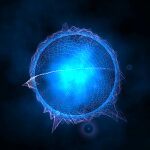Link to Pubmed [PMID] – 10085254
J. Cell. Sci. 1999 Apr;112 ( Pt 8):1191-201
Entamoeba histolytica is a protozoan parasite that causes amoebic dysentery in humans. The disease is prevalent worldwide. Infection with E. histolytica results in invasion of the intestine by the parasite, followed by tissue damage and inflammation. During this invasive process, parasites kill and phagocytose human epithelial cells, immune cells and erythrocytes. Expression of amoebic pathogenicity requires a dynamic cytoskeleton that allows movement, tissue penetration and changes in parasite morphology. Myosin IB is a member of the myosin I family of motor proteins. Studies conducted both with Dictyostelium discoideum, a non-pathogenic amoeba, and with the yeast Saccharomyces cerevisiae indicate the involvement of myosin IB in cellular processes including movement, phagocytosis and endocytosis. Recently, we isolated the gene encoding myosin IB from E. histolytica. Thus, we decided to analyze the role of myosin IB in pathogenesis of amoeba. Using a specific anti-myosin IB antibody, this protein was localized in cell regions including the pseudopod, vesicles and underneath the plasma membrane. When E. histolytica was activated for erythrophagocytosis, myosin IB was markedly recruited to both the phagocytic cup and around internalized phagosomes. To analyze the role of myosin IB in phagocytosis, a strain overexpressing the myosin IB gene was constructed. This strain synthesizes threefold more myosin IB than the wild-type strain. Challenge of the transfected cell line with erythrocytes showed that these amoebae were deficient in erythrophagocytosis mainly in the uptake step, suggesting a role for myosin IB in the pathogenic activity of a human parasite.



